-
When you click on links to various merchants on this site and make a purchase, this can result in this site earning a commission. Affiliate programs and affiliations include, but are not limited to, the eBay Partner Network.
-
Posts
2,764 -
Joined
-
Last visited
Content Type
Forums
CGC Journals
Gallery
Events
Store
Posts posted by markseifert
-
-
Great sleuthing, I'd never heard of her being on a cover either.

So, the implication of the Vanity Fair article is that there is more than one photo cover of her in this series...? None of the others quite look like the same woman.
In early, rarely seen glamour photographs by Bruno Bernard, known as Bernard of Hollywood, you see a 20-year-old Norma Jean with an eager smile and wide eyes, doing pinup poses with a very un-pinup expression. It’s hard to believe it’s the same woman who seduced a nation just by whispering through a verse of “Happy Birthday.” Bernard’s photos were used as the covers of the pre-teen pulp series “Teen-age Diary Secrets” (in one, Marilyn wears a snug orange sweater, with the photo caption “I played Kiss and Run”)Why does she look so familiar... Hmmm, it's a 1949 comic... A certain 23-year-old actress took a break in her stagnant movie career to return to modeling in 1949... A woman originally known as Norma Jeane Mortenson...So I checked Overstreet again, and it has no reference to this having Marilyn Monroe on the cover. There is not a single sale of this comic in the Heritage Archives. There aren't any copies at MileHigh or any other sellers I checked. I ran a few searches on the CGC message forums and as far as I can tell, nobody here has ever mentioned a Marilyn Monroe cover of Teen-Age Diary Secrets. Yet in a Google search there is a 2011 Vanity Fair article that does refer to Marilyn Monroe appearing on the cover of this comic, so apparently it's really her.
I can only imagine the reaction of the seller, who started the auction at $2.99 and whose previous auctions are primarily for "Vintage Feed Sacks" (!). The brief auction text states, "I found these comic books while cleaning my parents attic." It sounds plausible that this is really the story behind these comics, and this seller was sitting on what appears to be one of the rarest and most valuable of all the St. John romance comics (okay, with the exception of that one with the Baker cover that says "She will do anything to hold ").
-
Awesome! Well done and congrats, sir.
 So after a lot of work and the help of one AWESOME Rick/Gator I have gotten to this point, a life time dream!
So after a lot of work and the help of one AWESOME Rick/Gator I have gotten to this point, a life time dream!
Now all I need is 31-37 ;-)
James G
-
I love his airbrush covers! Are any originals known to exist?
Sci Fi, Pulp & Comic Illustrator Alex Schomburg by Lloyd N Phillips (formerly Green Lantern2008), on Flickr
Some of his pulp and magazine covers are around, I think (Timely might have one...?).
-
Going from memory, I think Western Picture Stories may have been 1 of the very 1st western comics circa 1938 perhaps with art by Will Eisner(?). No Overstreet in front of me.
The Mahon/Cook Comics Magazine Company "Centaurs" are a recent interest of mine also.
This book is part of a small burst of titles that began in Nov '36 as they tried to turn their single debut title (The Comics Magazine) into a line -- and they became the second publisher to have a line of original-material titles, after DC.
Comics Magazine Co. editor William H. Cook filed for bankruptcy the month after Western Picture Stories #1 hit the stands. The precise chain of events isn't clear (there are a few people trying to piece this together, fwiw), but due to the timing it's hard to escape the conclusion that the line expansion didn't do as well as they'd hope and for some reason he was personally on the hook for some of the bills.
Just a few months later in late summer '37, the titles would be in the hands of Ultem.
-
Some great stuff in this thread. Thanks to all for posting.
-
Great info

So... if the 3.5 cent per unit cost from the printer was about the same the previous decade, then yeah, Centaur's 48,000 unpaid print bill amounted to 1.4 million comics.
But you know... I think GCD tells the tale, here. Looks like they started about 5 titles in the late Summer / early Fall of 1940 (so, this would have been titles launched very shortly before bankruptcy): Arrow, Detective Eye, Fantoman, Masked Marvel, Super Spy.
They rolled the dice on doing a big expansion and lost. When the print bills started coming in on those books, they were sunk.
I think PreHero made a good point earlier re the rapid expansion of other publishers plus not having a big hit superhero title. It's pretty clear in hindsight that Jacquet leaving them to form Funnies Inc in 1939, and taking Bill Everett and Carl Burgos (among others) with him, hurt Centaur's prospects in this regard, as their talents were then employed on the behalf of many other publishers as well.
Now take Froehlich’s print run and sell through numbers: 350,000 print run and average sell through of 62%. Assume no advertising revenue for simplicity and a cost of production of the book itself at $1,080, i.e. 36 pages of content at a total cost of $30 a piece (to pay all talent: editor, penciler, inker, writer, … I might be off on that). For the average comic book selling 62%, revenue is $14,105 (350,000 * 0.62 * 0.065) and costs are $1,080 for content and $12,250 for printing cost, leaving you with a net of $775 per average title.
Atlas distributed about 60 titles, so on any given month, that’s about 50 books (counting quarterlies and bi-monthlies) or $38,750 and on an annual basis $465,000. The tax structure now plays an important part in trying to shelter as much of that profit as possible.
If a title is popular and, let’s say, warrants a 500,000 print run and still sells through 62%, the profit off that one book is $1,570 per month or $795 more than the average title. Publishers could easily afford to pay that talent more than other talent!"
-
The collections come from all over the country, including some rather small towns. Many of the collections, like Church, Larson and Wright contain long runs. Centaurs appeared to be on the newsstand, next to DC, Timely and the rest of the GA titles. Based on this, I suspect "poor distribution" was not a factor.
Mt. Morris IL is very near Rockford (and is the closest city of any size nearby, in fact), so presumably they had excellent availability of Kable-distributed titles. I've always wondered if that had any connection to the Rockford collection.
As a lifelong IL resident, there has always been local lore that dealers scoured the Sparta (where World Color moved it's comic printing in the Silver Age) area for potential Silver Age caches (perhaps from employees or the like) in the 70s and 80s, but I've never heard the same thing about Mt Morris

There is apparently a museum of Kable company history still there, which I'd love to take a look at some day.
-
Thanks so much for posting this!

I've always heard Geppi purchased the bulk of this find, which seems to be confirmed by the photos of the museum exhibits I've seen here and there over the years. I've been amazed by this find since it was first described in Overstreet Advanced Collector back in '93.
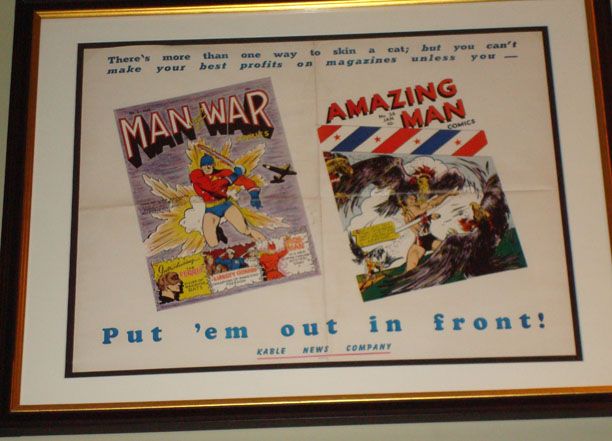
-
I've always read poor distribution was a contributing factor , but it also seems Centaur did not have a break out character or title. I wonder if they were just crowded off the newsstand by better financed new publishers in the wake of the success of Superman, Batman, Human Torch and Sub-Mariner?
I've seen the poor distro factor mentioned in various places too, but imo there's a problem with that line of reasoning.
We can partially confirm the Kable News connection (at least so far as distribution is concerned) wondered about in Stroup's linked research, because that comic book promotional flyer drugstore find that surfaced in the early 90s contained a Kable News flyer featuring Man of War #2 and Amazing Man 26 (see Overstreet's Advanced Collector #1). So, we know for sure they (or CCoA at that point, I guess) were using Kable at the end.
I also think it's likely that they were using Kable before that as well. It makes sense that they (and many other comic publishers) who were printing out of World Color's St Louis location were likely using Kable because of the close proximity of St Louis and Kable's original Mt Morris IL location. Anything's possible, but the geography just makes a ton of sense.
By all appearances Kable was (and is) a solid outfit. Their first foray into distro was Hugo Gernsback's "Radio Craft" in 1932, we know they were a major distributor of comics from the beginning at least up through the early 60s (and likely beyond) and they are a major presence in newsstand distribution to this day.
Anyway, another interesting little tidbit.
-
$100,00 was a not inconsiderable chunk of change for those days, particularly for what was seemingly a small scale operation. Perhaps an indication that their sales were truly dismal?
I was just thinking about that angle too. A $48,000 print bill is a lot of comics.
So, it's 10 cents split 4 ways: publisher, printer, distributor, newsdealer -- and the pub and distro have to factor in returns. That's a pretty tiny unit cost (for the publisher buying from the printer). 3 or 4 cents per unit, plus or minus?
Could be around 1.5 million comics, maybe more.
Roughly how many titles per month was Centaur doing throughout 1940?
-
Finally, where did you get the debt dollars from?
That part is from research done by Tim Stroup, co-founder of the Grand Comic Book Database:
http://www.mindmeister.com/123768009/centaur-publications-comics-mar-1938-dec-1940
http://todayincomics.blogspot.com/2011/11/centaur-publications-demise.html
As you can see there he dug up the NYT notices. Very interesting stuff indeed.
-
Interesting! Always wondered about Comic Corporation of America (CCoA) and assumed it was just another name for Centaur, since there was over a year of overlap between the publishers. Never realized Centaur had gone bankrupt in Oct 1940.
So, I checked GCD and found some interesting (at least to me) information, which provides some insight into the end (?) of "Centaur" line.
Yeah, I think it's interesting also. I've only started getting interested in the business aspects of this, so it's possible someone like Jon Berk has already worked out how all this fits together throughout... in any case, it's not too hard to see how the various early threads (Ultem, Comic Magazine Company) gathered together into Centaur, but at first glance it's not so clear what happened after the Oct 1940 Centaur Publications bankruptcy.
The indicias show that Centaur and Comic Corporation of America for a time shared the same 215 4th Avenue NY, NY editorial office address, so that clearly ties it in even after the bankruptcy of Centaur Publications (and as you say, there was some overlap of the name use for awhile there, according to indicias)
Googling the publishing address in the 1941-42 CCoA era indicias (which during this era usually means where the comic was printed), it looks like they switched from World Color to Phelps Publishing Co. for printing -- who was also the printer for Fox Publications at this time (and incidentally, Phelps was the publisher of Good Housekeeping magazine).
According to the Fox article by Jon Berk on comicartville.com, Phelps helped force Fox into bankruptcy in early 1942. So... it wouldn't be too hard to imagine that they kept Comic Corporation of America on a short leash as well, possibly explaining their end (and the ultimate end of the Centaur-related line) around the same time.
-
Interestingly, these each have covers from the last of the Centaur titles - those that ended between Dec 1941 and Apr 1942. Some type of last grasp for the company or just a way to make some money as they existed publishing comics?
At a glance, it's easy to imagine them (just "Comic Corporation of America" at this point) taking existing inventory and throwing stuff against the wall to see what worked in '41 and '42.
Centaur itself declared bankruptcy in Oct. 1940, owing World Color $48k and Funnies Inc $4800.
So, they couldn't print with World Color anymore even operating under the other corp name because the industry wasn't so big that that wouldn't have been obvious, and you can see from indicias that they did change printers.
And they couldn't use Jacquet anymore for the same reason, and Jacquet had taken most of the Centaur creative stable with him when he formed Funnies in the first place, so they probably weren't in a great position to generate new material.
In any case, interesting discovery. (thumbs u
-
This is about a dozen different kinds of awesome.
image from web 1924- think it's Howard Brown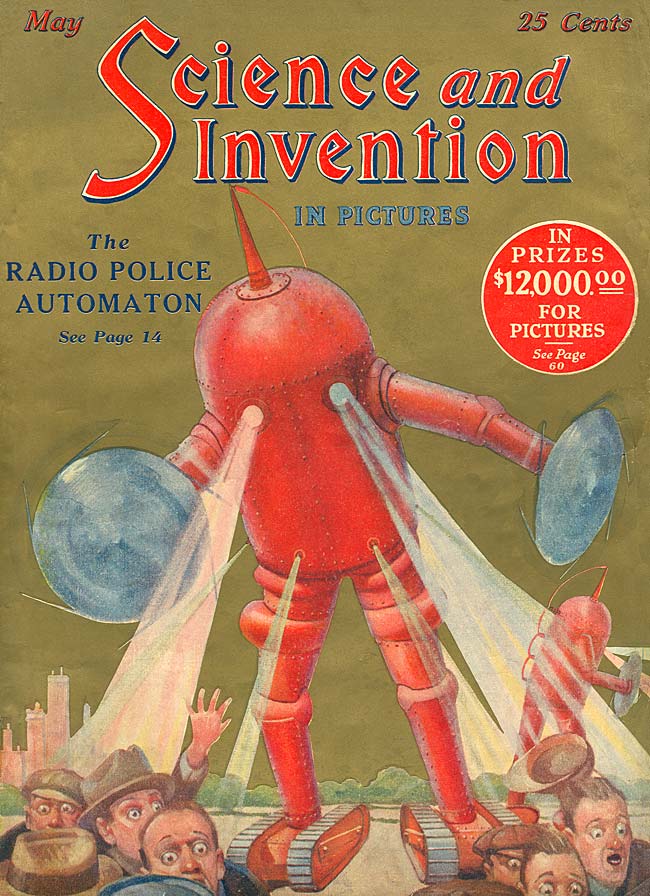
-
ok, I see... so Jeske worked for World Color Printing.
I hadn't realized World Color was originally located in St Louis (that 420 De Soto address is also listed for ACG, Rural Home, and other early comic publishers), or that DC had briefly used them during the Golden Age. Of course, they are famously known for the Sparta IL location during the Silver Age.
It seems that the St Louis Star started World Color to handle World's Fair printing in 1904, and subsequently found themselves looking for other uses (much in the way that Eastern Color had via Gaines).
In any case, interesting. Apparently the De Soto building still has World Color in concrete above the entrance.

http://www.nostalgiazone.com/doc/zine/06_V2N2/pilgrimage.htm#
-
Huh... I don't think I've noticed that the "publishing office" was in St Louis at this point. I've never noticed business manager Fred B. Jeske's name associated with the company either.
Aha --a little ancestry.com sleuthing reveals that the Jeske family worked in the printing business. Looks like his brother ran or supervised the printer itself, his sister was a secretary, and he was a business manager.
Interestingly, there is a Jeske park in St Louis county in the town of his birth, Ferguson, MO. Looking at the timing, the Jeske family would probably have been one of the "founding" families of the town.
Anyway, thanks for the scan. Very interesting.
edited to add -- so this was with Donenfeld/Liebowitz distributing, but not yet actually Nicholson's business partners. Was having trouble with the timeline, but it fits... there's a quick series of business events there between the launch of vol 2 of More Fun and the actual launch of Detective. Good stuff.
-
I just realized Primer 2 is 30 years old now.

-
Wolverton

I've got the Fantagraphics collection from several years back of a bunch of Powerhouse material and it is some fantastic stuff.
This heatwave must be getting to me. I bought a Timely!
Big thanks to Ciorac for putting me into this sweet Powerhouse Pepper #1.
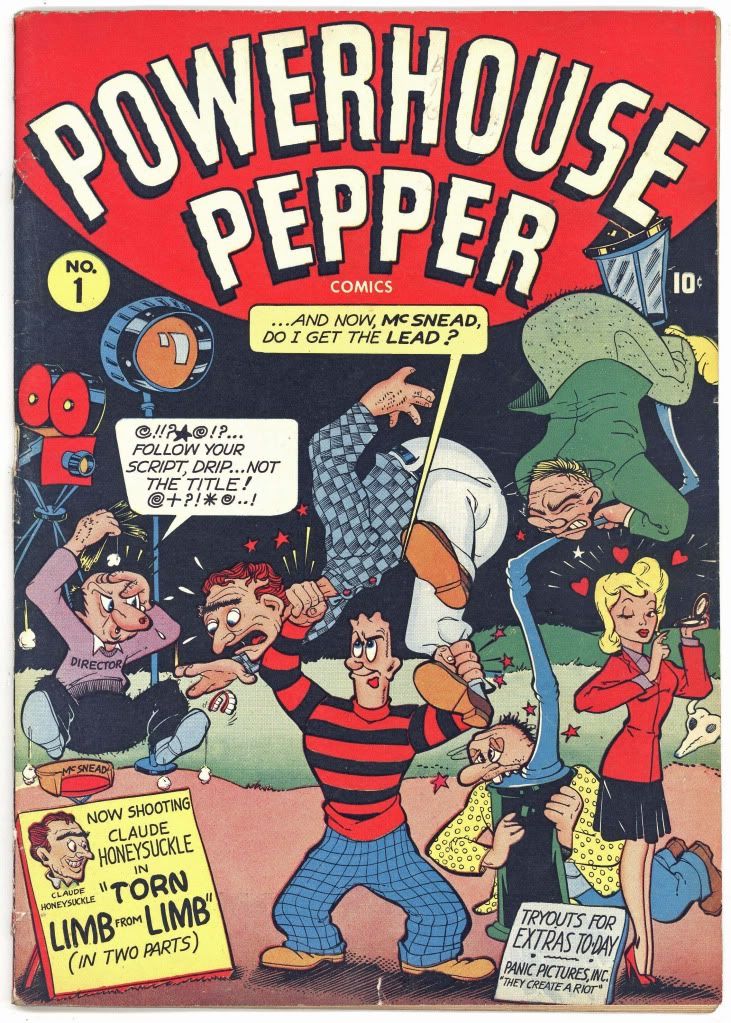
-
Yeah, that's a great book, love the Golden Age origin issues.
 new upgrade.
new upgrade.
-
Nice!
 New acquisition...
New acquisition...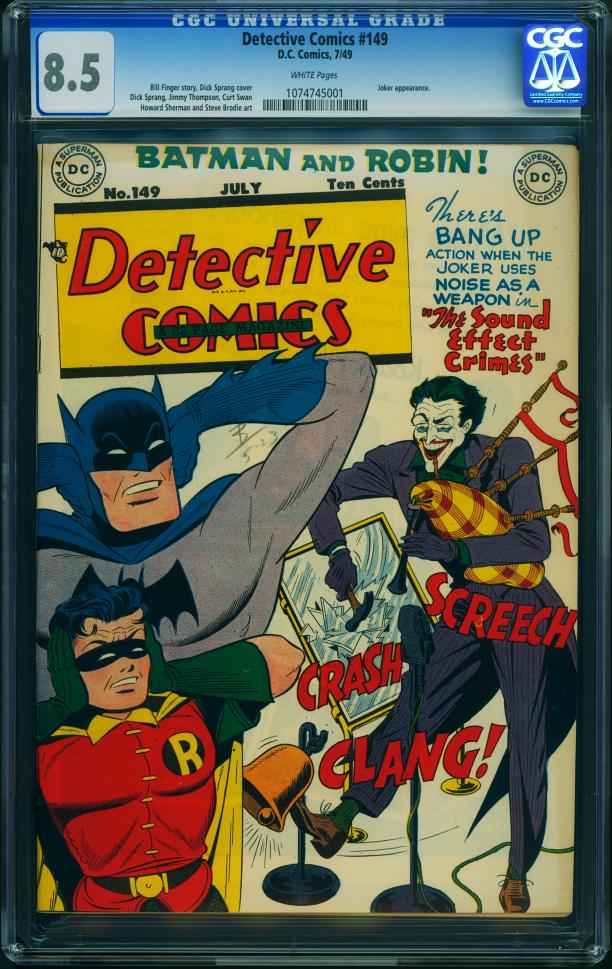
-
Nice! You have a fantastic late 40s / early 50s DC collection.
 This thread could use a bump so here we go: This book just arrived today courtesy of a board member. Christmas in July!
This thread could use a bump so here we go: This book just arrived today courtesy of a board member. Christmas in July!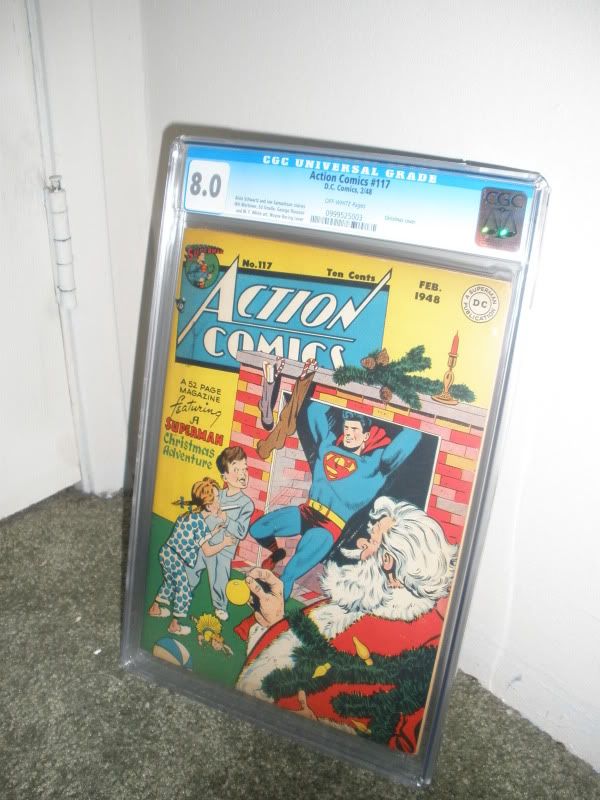
-
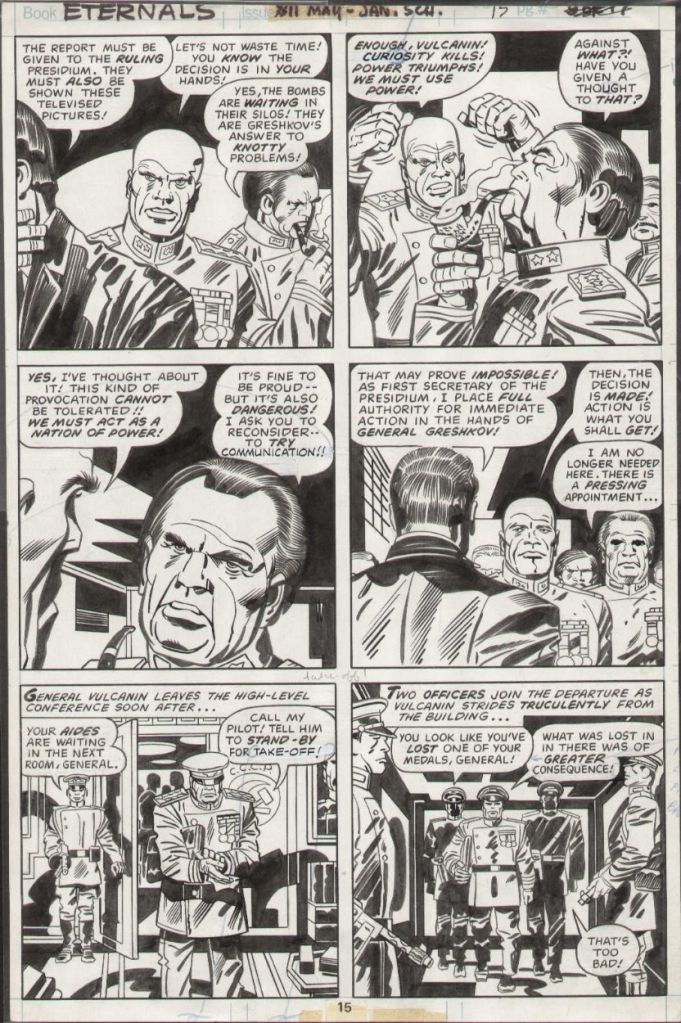
Fwiw, that sure does look familiar. I bet somebody here is going to be able to help you, because I think I've seen that around within the past few years. Maybe on CAF?
-
BOOT -- thanks for posting that pamphlet. That is great stuff.
-
Man. Those books are the goods.
 Among the coolest books I've seen posted here recently for sure.
Among the coolest books I've seen posted here recently for sure.
Thanks! It will look good with Speed 18...Beautiful books Jimmy! (thumbs uAnd since we are posting newly arriving pedigrees...

Holy crud, Mr. B, that book is amazing.





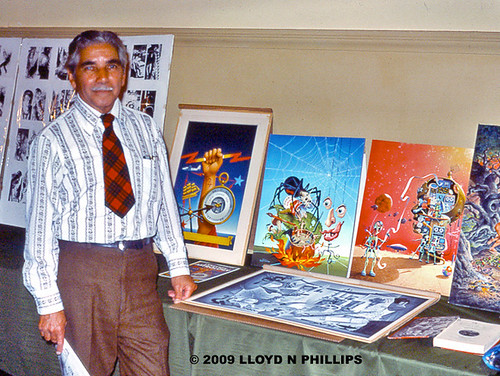


Marilyn Monroe for the win! (Teen-Age Diary Secrets #6 auction)
in Golden Age Comic Books
Posted
It would be interesting to try to identify the other covers, as the implication here is that he was photographing several women at the time who would later become well-known models or actresses.